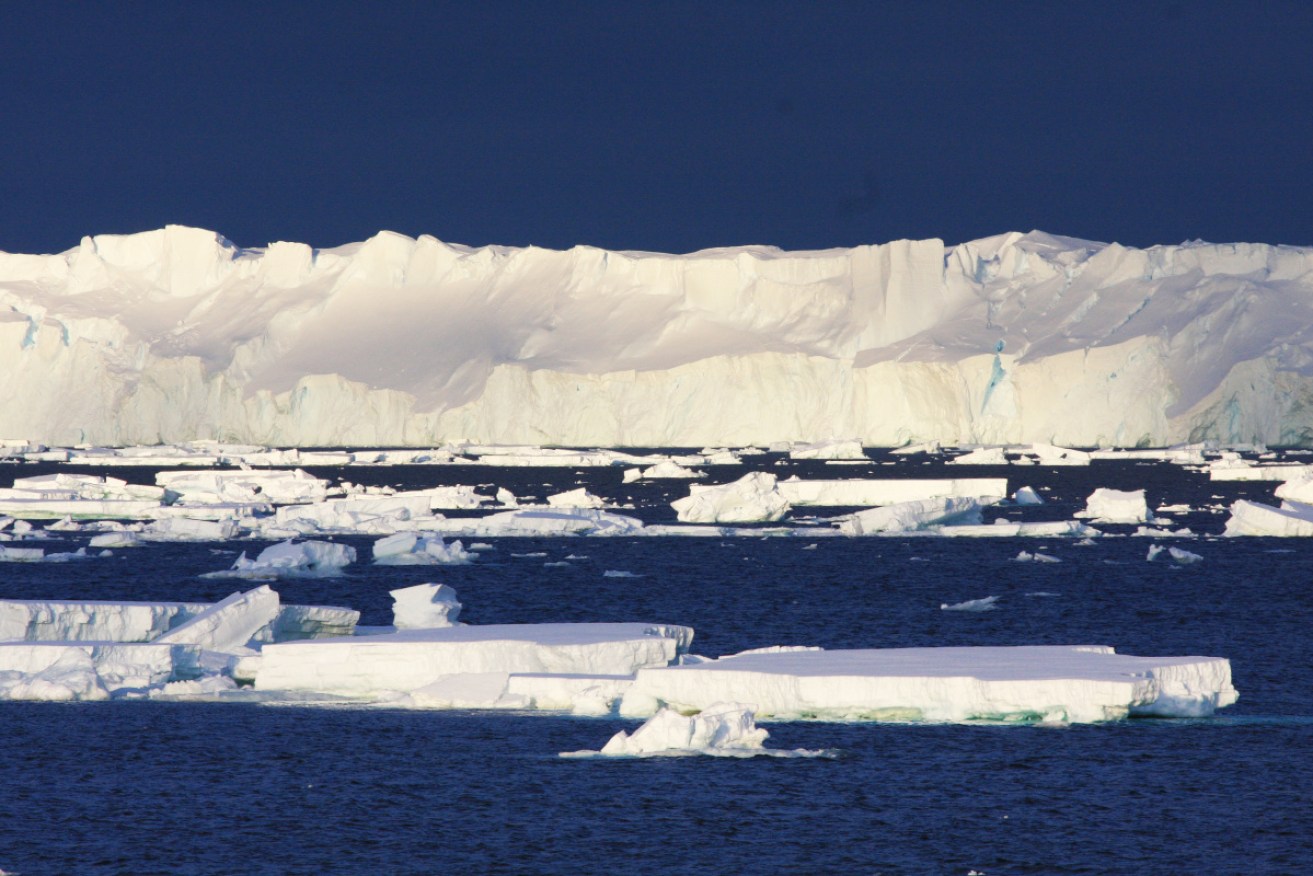NASA detects signs of East Antarctic glaciers melt

The Totten Glacier in Antarctica's Australian territory in January 2015. It is one of the world's biggest glaciers. Photo: AAP
NASA scientists have detected signs that large glaciers in East Antarctica are melting away.
The eastern half of the continent was previously considered to be more stable than the west.
But new maps of ice velocity and elevation have revealed that a group of glaciers covering one-eighth of the East Antarctic coast have been losing ice for a decade.
The findings will heighten fears that melting ice could lead to rising sea levels worldwide.
New detailed NASA maps of ice velocity and elevation show that a group of glaciers spanning one-eighth of East Antarctica’s coast have begun to lose ice over the past decade, hinting at widespread changes in the ocean. https://t.co/cLQ8t1U8PN
— NASA Climate (@NASAClimate) December 10, 2018
Glaciologists have previously warned that the Totten Glacier, the fastest moving mass of ice in East Antarctica, was shrinking as a result of warming ocean water.
The enormous glacier holds enough water to raise the sea level by around three metres.
“Totten is the biggest glacier in East Antarctica, so it attracts most of the research focus,” said Catherine Walker, a glaciologist at NASA’s Goddard Space Flight Centre in Maryland, US, who was presenting the findings at a meeting of the American Geophysical Union (AGU).
“But it turns out that other nearby glaciers are responding in a similar way to Totten.”

Sea ice as seen from NASA’s Operation IceBridge research aircraft in the Antarctic Peninsula region in November 2017. Photo: Getty
Researchers found that four glaciers west of Totten, in an area facing Vincennes Bay, had dropped in surface height by an average of nearly three metres since 2008 – before that year there had been no measured change in elevation.
To the east of Totten, glaciers along the Wilkes Land coast have roughly doubled their rate of lowering since around 2009, with their surface falling about 0.25 metres every year.
Scientists say the level of ice loss is small compared with glaciers in West Antarctica, but points to nascent and widespread change in the east.
“This change doesn’t seem random; it looks systematic,” said Alex Gardner, a glaciologist with NASA’s Jet Propulsion Laboratory.
“And the systematic nature hints at underlying ocean influences that have been incredibly strong in West Antarctica.
“Now we might be finding clear links of the ocean starting to influence East Antarctica.”
-AAP








